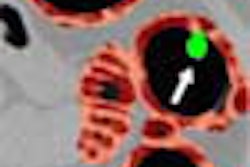As virtual colonoscopy moves slowly toward the clinical mainstream, the question of which candidates are likeliest to benefit from colorectal cancer screening is becoming an important issue for radiologists.
Several studies presented earlier this month at the 2002 American College of Gastroenterology Conference in Seattle may help virtual colonoscopy providers better target their services. In two studies that relied on conventional colonoscopy screening, researchers found that smokers are more likely -- and women slightly less likely -- to develop adenomatous colorectal polyps compared to the general population.
A multicenter trial conducted at the University of Michigan, Ann Arbor, the National Cancer Institutes in Bethesda, MD, and the Oregon Health Sciences University in Portland, looked at the question of gender in colorectal cancer screening.
While guidelines from several organizations, including the Arlington, VA-based American College of Gastroenterology, recommend colorectal cancer screening beginning at age 50 for average-risk individuals, recent studies have suggested that the prevalence of advanced and nonadvanced cancers may be lower among women, who tend to develop colorectal cancers later than men.
In the multicenter trial, 1,088 asymptomatic women referred for colorectal cancer screening underwent conventional colonoscopy. In all, 695 of the women were between the ages of 50 and 59, while 393 were between the ages of 60 and 69. Women were excluded from the study if they had undergone a colonoscopy or barium enema within the last 5 years, suffered from anemia or iron deficiency, or had blood in the stool within the past year. The researchers compared colonoscopy findings between the two cohorts grouped by age.
According to the colonoscopy results, 17.6% (122/695) of the women aged 50-59 had adenomas, while 3.9% (27/695) had advanced adenomas. Results were similar for women aged 60-69, 20.6% (81/393) of whom had adenomas, and 4.8% (19/393) of whom had advanced adenomas.
Among the 50-59 age group with advanced adenomas, 16/27 (59.3%) of the lesions were found proximal to the splenic flexure without any adenomas distal to the splenic flexure, compared with 52.6% (10/19) of women aged 60-69. In the younger group, 94.7% (18/19) with advanced adenomas proximal to the splenic flexure did not have adenomas distal to the splenic flexure, compared to 92% in the older group, the researchers wrote in an abstract accompanying the presentation.
"The prevalence of adenomas and advanced adenomas in women is less than general population estimates," the group concluded. "There appear to be no significant differences in the prevalence or distribution of adenomas in women 50-59 compared to women 60-69."
Nevertheless, the authors believe there is no evidence that beginning colonoscopy screening later -- at age 60 rather than 50 -- would be advantageous for asymptomatic, average-risk women. In an e-mail to AuntMinnie.com, lead investigator Dr. Phil Schoenfeld said the risk at age 50 is high enough to warrant screening.
"Fifty-year-old women have approximately 3%-4% prevalence of advanced polyps (i.e., polyps > 10 mm in diameter, polyps with high-grade dysplasia/carcinoma in situ, or villous polyps)," he wrote. "These are the polyps that are likely to develop into cancer and which should be removed to prevent cancer."
"In my opinion, most women would want a definitive therapeutic/diagnostic procedure if they had a 3%-4% likelihood of having an advanced precancerous lesion in their colon," Schoenfeld wrote.
Another study presented at the ACG meeting found that smoking is an important risk factor for colorectal polyps -- as predictive as family history of polyps, according to researchers from the Stony Brook School of Medicine in Stony Brook, NY.
In the study, Dr. Rajeev Attam and colleagues sought to assess risk factors for the development of colorectal polyps. They reviewed the results of 1,366 consecutive screening colonoscopies performed between December 1999 and April 2002.
The participants included 354 current smokers (who smoked 10 years or more), 364 ex-smokers (who had quit more than 10 years before the exam), and 848 nonsmokers, who were also assessed for body mass index, fruit and vegetable intake, average weekly exercise, and daily nonsteroidal anti-inflammatory drug (NSAID) use.
The figures for relative risk -- that is, the effect of various factors on the incidence of colorectal polyps compared with other factors -- were as follows: wine consumption, 1.74; female sex, 0.68; over age 60, 2.07; family history, 1.72; and smoking, 1.72.
The results showed that individuals over 60 years old, those with a family history, and smokers had higher incidence of colorectal polyps. The incidence was higher in smokers than in ex-smokers (P<0.01), in whom the incidence of colorectal polyps was comparable to that of nonsmokers. Smoking was as predictive of polyps as family history, Attam and colleagues wrote, while drinking wine and being female appeared to lower the risk.
Perhaps more important, a much larger proportion of the smokers had more than two polyps, a polyp larger than 1 cm, or a polyp with a greater potential for malignancy, according to the authors. Yet the number of "pack years" smoked was not found to be a significant predictor on multivariate analysis.
Doctors should consider performing screening colonoscopy in current smokers before age 50, the group concluded.
By Eric BarnesAuntMinnie.com staff writer
November 20, 2002
Related Reading
VC screening trials find good sensitivity, high patient acceptance, October 30, 2002
Recommendations on colon cancer screening updated, July 16, 2002
Routine colon cancer screening should start at age 50 for most people, June 7, 2002
Copyright © 2002 AuntMinnie.com




















